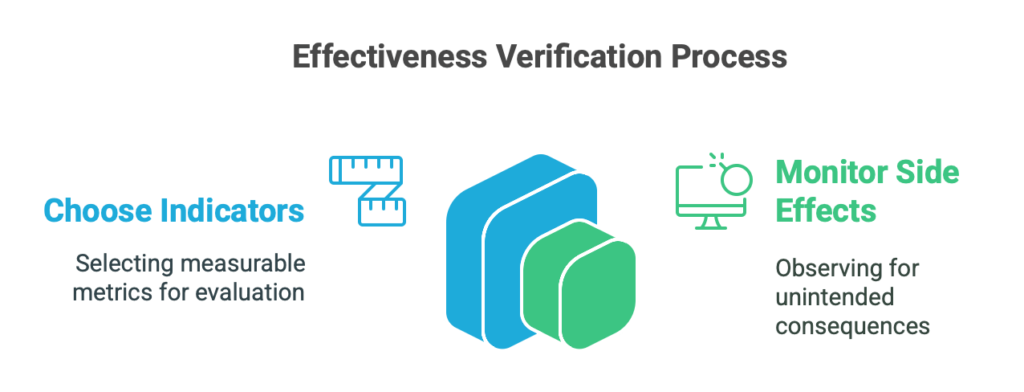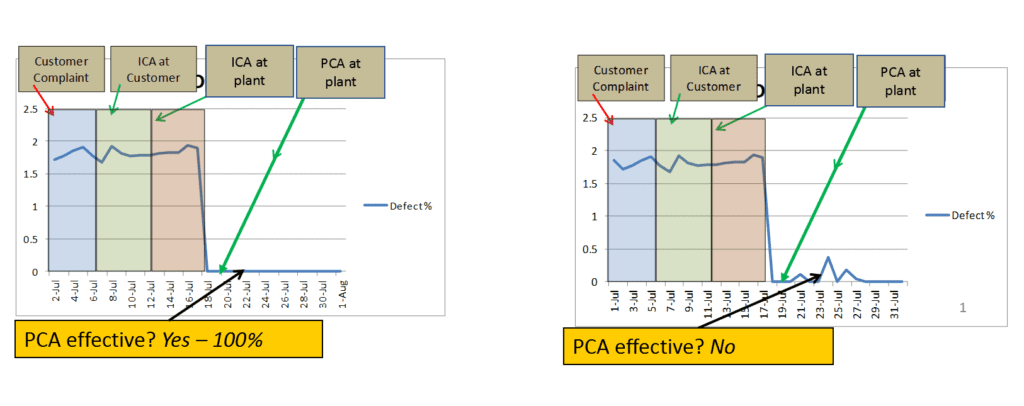When conducting 8D analysis, organizations often find numerous reasons to delay the implementation of corrective actions. The most common justification is that defective products are no longer being sent to customers, and the source of the error is already identified.
A frequent barrier to implementing these actions is the associated cost, which is deemed too high. As a result, organizations often maintain additional controls at production plants or customer locations instead of addressing the root cause.
One critical aspect to remember during analysis is the importance of defining Permanent Corrective Actions (PCA) that eliminate root causes without introducing new issues. These actions should address root causes specifically, while Interim Containment Actions (ICA) are designed to address symptoms temporarily.
Verifying the Effectiveness of Permanent Corrective Actions
Defining actions that prevent recurrence is only part of the 8D methodology. The next step is to evaluate whether these actions achieve the intended outcomes in practice.
Key Considerations for Effectiveness Verification:
- Choose Appropriate Indicators: Use measurable metrics, such as PPM (parts per million), to confirm the short- and long-term effectiveness of solutions.
- Monitor Side Effects: Observe whether the implemented solutions inadvertently cause new issues due to overlooked factors in the risk analysis (e.g., PFMEA).

Practical Implications of Validation
In practice, validation ensures that a client-validated solution is approved. This typically involves the acceptance of an 8D report submitted through a customer-specific complaints management portal.
From the production plant’s perspective, validated corrective actions should eliminate the need for temporary measures. This reduction leads to cost savings by removing activities such as selection, additional inspections, or reliance on a single machining cell.
How the Validation Process Should Look
The most effective approach, when possible, is to use ICA to verify the effectiveness of Permanent Corrective Actions. Below are two scenarios illustrating this process:
- Effective PCA Implementation: Nonconformities are reduced to 0%, demonstrating the success of the final action.
- Ineffective PCA Implementation: Nonconformities persist, indicating that the PCA needs improvement. In such cases, ICA must continue until the PCA becomes fully effective.

Key Validation Insight for Permanent Corrective Actions:
If the nonconformity level remains above 0% after implementing PCA, the corrective action is ineffective and must be revised. During this time, ICA should remain in place to prevent further issues.
You can download an automatic, editable Excel form for free on the Free Quality Tools
Document name: 8D Report – Excel form
Author: Dariusz Kowalczyk


